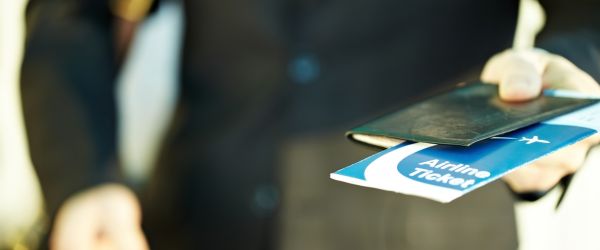As part of our 70th birthday celebrations, we thought it might be fun to look back at the evolution of airline tickets.
From the days when people popped into travel agencies to book trips in person and took time to chat about each other’s journeys, to a time punctuated by the clacking cacophony of sounds emitted by printers churning out tickets. They whirred in the background while travellers and travel consultants cheerfully chatted, waiting patiently for the sound of tearing perforated edges as tickets were separated from their continuous folds with a sense of finality – like the exclamation point on a well-orchestrated travel plan.
These days, amidst life’s rapid rush, change marches on, and with it comes a new, sleeker form of simplicity that we embrace as technology propels us toward the future. Here’s the timeline that moved us from then to now.
The Ticketing Revolution
The introduction of IATA’s Billing and Settlement Plan (BSP) for travel agents in Tokyo in 1972 marked the birth of the IATA neutral paper ticket. These tickets could be used by any travel agent for journeys on almost any airline worldwide. Flight coupons functioned like cheques – written by agents, reconciled by IATA, and cashed by airlines – with the iconic IATA logo adorning each ticket cover.
The Digital Frontier
In 1983, magnetic stripes began appearing on coupon backs, heralding an era of automation by storing travel data electronically. Suddenly, tickets could double as boarding passes. The e-ticketing revolution was officially underway, though paper ticket use didn’t truly peak until 2005, with 285 million issued.
Paperless Progress
The first paperless e-ticket was issued in 1994, coinciding with the internet’s domestic rise, granting consumers unprecedented access and choice (albeit with some still visiting ticket offices initially to purchase paper tickets).
Global e-ticket standards were established by 1997, but adoption lagged – only 19% of tickets were paperless by May 2004. Industry turmoil following 9/11, the Iraq war, and SARS prompted a push for cost-cutting efficiencies. At their 2004 Singapore AGM, IATA unveiled “Simplifying the Business” – aiming for 100% e-ticketing to save $3 billion annually on 400 million tickets.
The Convenience Factor
Today, we harness the full potential of e-ticketing technologies to deliver unparalleled advantages to our corporate clients and their business travellers. Our innovative platform seamlessly integrates e-ticketing with proprietary booking tools, expense management systems, and duty-of-care solutions. This interconnected ecosystem enables travellers to self-manage all aspects of their e-ticket itineraries through a single user-friendly interface accessible via mobile app or online.
What’s interesting is that in the age of instant everything, there’s a certain charm to that slower travel experience. You might have gotten places just as fast, but the anticipation built as you unfolded that ticket, a physical reminder of the adventure ahead.

